Art Fairs
8 Art Historical Treasures at TEFAF, From an Eerie Little Christ Child to a Self-Portrait by a 19th-Century Actress
Here's what's on offer at the fair in Maastricht this year.

Here's what's on offer at the fair in Maastricht this year.

Sarah Cascone

With wide-ranging offerings from an astounding 279 dealers at TEFAF Maastricht this year, there is no end to the wonders in sight. To really experience the fair in its entirety requires two full days at minimum, but even a few hours will yield discoveries of new artists, artifacts, jewelry, and design objects. Here are just a few of the treasures that caught our eye on the fair’s opening preview day.
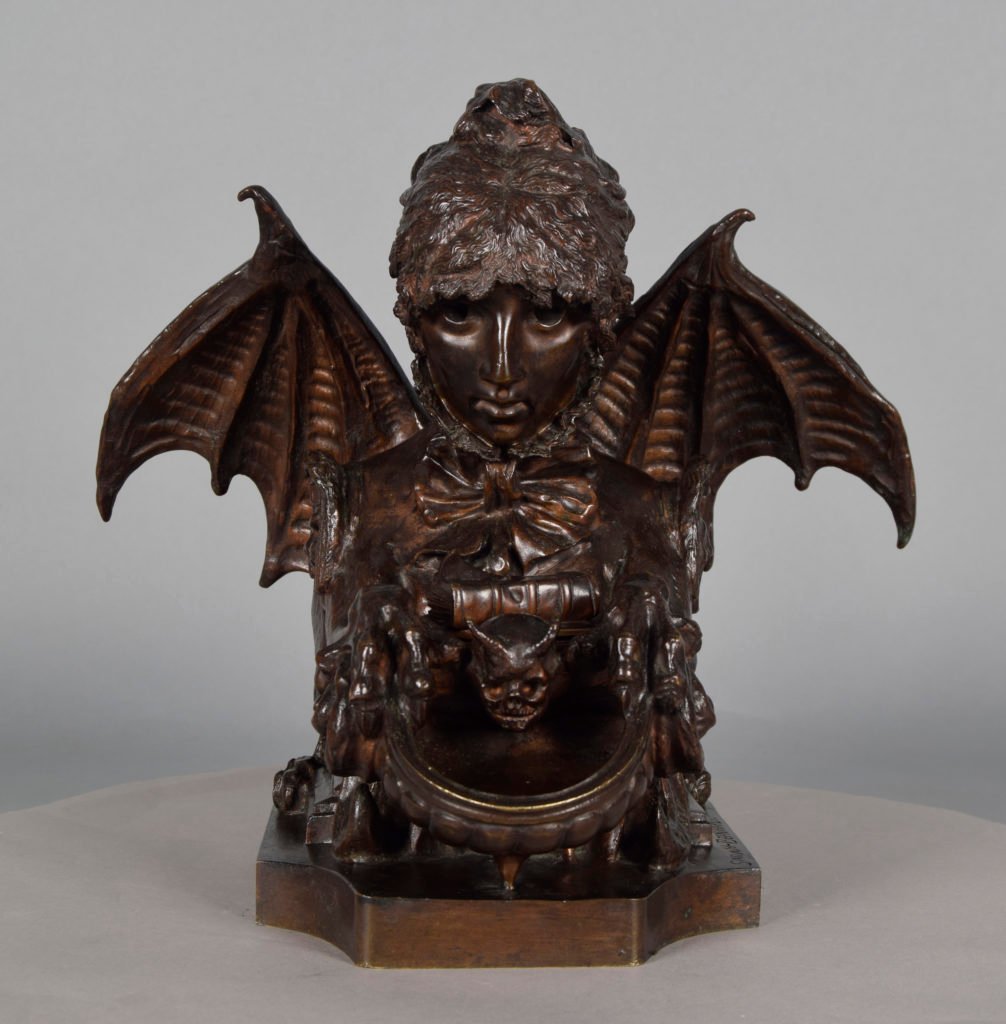
Sarah Bernhardt, Autoportrait en chimère, encrier (Self-portrait as a Chimera, Inkwell) (1880).
Sarah Bernhardt’s (1844–1923) fame as the most successful actress of the 19th century endures, but you probably didn’t know she was also a talented artist who exhibited her sculptures in the Paris Salon between 1874 and 1886. An arresting and faithful bronze self-portrait casts the star in the role of a fierce chimera with claws and dragon wings.
“She was influenced by the Symbolist group,” gallerist Jack Kilgore told artnet News, noting that other copies of the work are owned by the Museum of Fine Arts in Boston and the Virginia Museum of Fine Arts. “They’re fairly rare, and this is a very good cast.”
The piece is a powerful image of a woman who dominated the Paris stage, and offers a fascinating insight into how Bernhardt must have viewed herself. By midway through the fair’s first VIP day, the sculpture, which doubles as a functional inkwell, had already sold for $220,000.
When the Parisian Galerie Perrin bought this atmospheric painting of the Pisa Cathedral, they knew there was something unusual about it. “There’s a small hole in the canvas,” Mandy Tutin told artnet News. “We thought, ‘this is not normal, this isn’t an accidental hole.'”
After careful research, they realized they had stumbled upon a Louis Daguerre (1787–1851) diorama, a unique form of painting devised by the artist and inventor in 1822, nearly two decades before he invented the daguerreotype. Working with painter Charles Marie Bouton (1781–1853), he crafted canvases with elements painted on both sides, so that the work shifts in appearance under different lighting conditions. He showed works such as this one in his custom-built Paris venue, called Diorama.
“People went as if it were the cinema,” Tutin said. “It’s like a little movie.”
Nearly two centuries later, the effect is still stunning, as the scene miraculously shifts from day to night, with a figure holding a torch appearing in the center of the canvas, the flame aligned with the once-mysterious hole. The effect, explained Tutin, “is a reflection between the light and the transparency of the canvas.”
The piece is for sale for €850,000. “This is unique in the world, the very last one in private hands,” Tutin added.
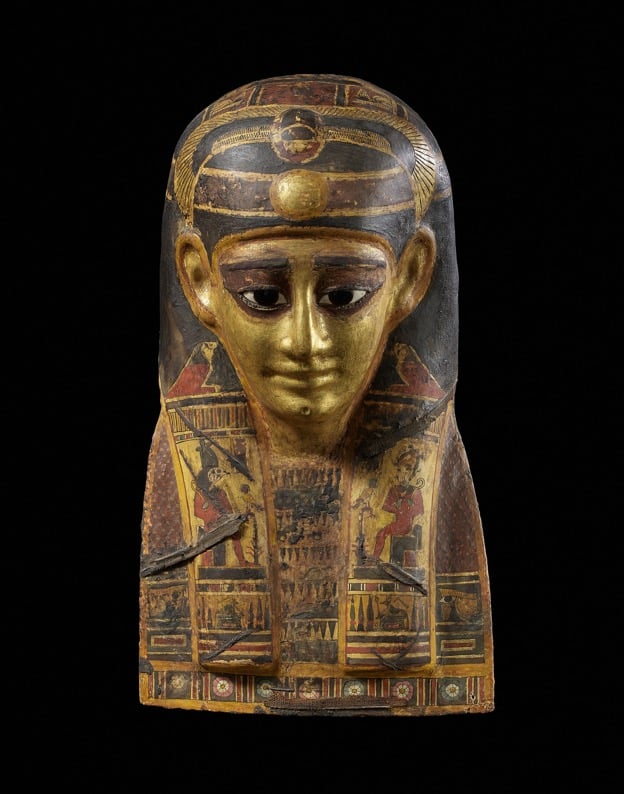
Mummy mask, Ptolemaic period (306–30 BC). Photo courtesy of Galerie Eberwein.
King Tut’s treasures may be on their final world tour, but you can still get your Egytomania fix at TEFAF, where the fair’s impressive ancient section features a richly gilded mummy mask priced in the low six figures.
“This is actually a rather late mummy mask, from the Ptolemaic period, after the conquest of Alexander the Great,” gallery owner Antonia Eberwein told artnet News. “It’s an extremely high quality piece with inlaid eyes and really fine painting. The craftsmen who painted the tombs of the kings weren’t just any painters—they were the Picassos of the country.”
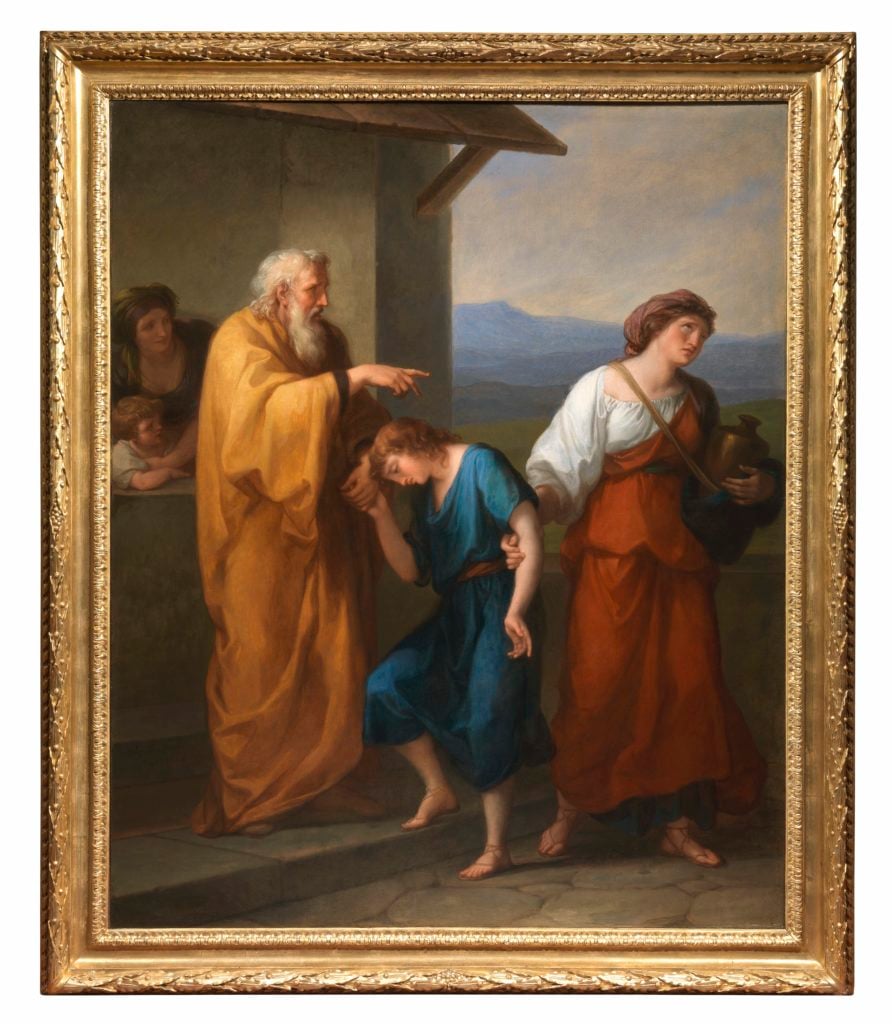
Angelica Kauffman, Abraham Drives Hagar and Ishmael Into the Desert (1792). Photo courtesy of Benappi Fine Art, London.
This painting by Angelica Kauffman (1741–1807), one of the two founding female members of the Royal Academy in London, depicts a biblical scene in which Hagar and her son, Ishmael, are kicked out of their home by Abraham. But there is no tearful begging nor devastation. Instead, Hagar almost appears to be rolling her eyes, a world-weary woman used to putting up with nonsense.
It’s easy to imagine Kauffman, who had to deal with false rumors that her academy membership was due to a sexual relationship with founding president Joshua Reynolds, drawing on personal experience to make the work.
“This painting has a very interesting story about its commission,” Harry Gready of Benappi Fine Art told artnet News. “There were two very powerful women involved: Angelica Kauffman herself, and an aristocrat, Polissena Gamba della Perosa.” The wife of a marchese and an influential arts patron, della Perosa knew Kauffman from the artist’s influential Roman salon, which was at the heart of the city’s intellectual life.
“It’s a stunning thing from a time when female artists were not appreciated,” Gready said of the canvas. “Kauffman was the greatest female artist of her time, unequivocally.” The work is on sale for six figures.
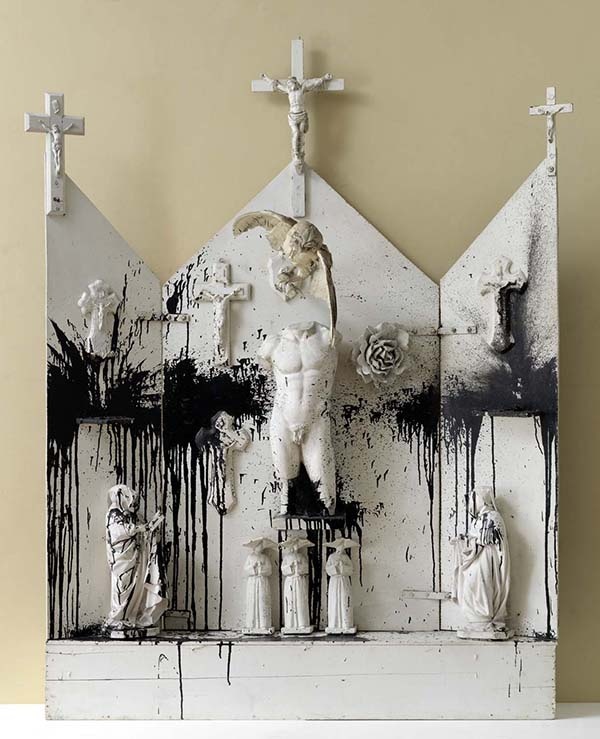
Niki de Saint Phalle, Autel noir et blanc (1962). Photo courtesy of Galerie Georges-Philippe & Nathalie Vallois, Paris.
With its focus on Old Masters and antiques, there is no shortage of Christian religious art at TEFAF. That’s what makes Autel noir et blanc by Niki de Saint Phalle (1930–2002)—which has a small white altar with crucifixes, a fragment of a classical-looking male torso, and a small taxidermy owl—stand out so clearly.
“It’s a religious form, presented in a very provocative way,” said Georges-Philippe Vallois of Georges-Philippe & Nathalie Vallois. “This is one of the final assemblage shooting pieces by the artist.” To create these works, Niki put bottles of paint on shelves built into her sculptures and shot at the work to create dripping explosions of paint.
“This kind of museum piece, you nearly never see them,” Vaollis said of the work, priced at $1.2 million. “It comes from her foundation and we can only sell it to a museum.”
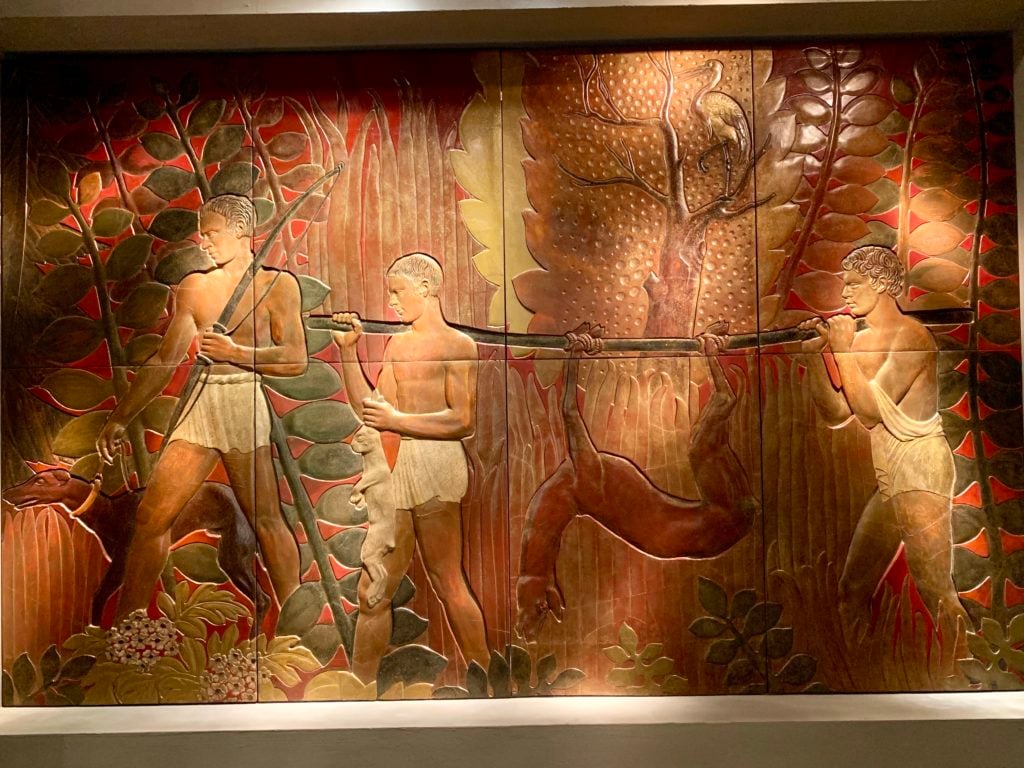
Jean Dunand, La Retour des Chasseurs (1935). Photo by Sarah Cascone.
The SS Normandie, one of the most famous ocean liners of all time, sunk in a fire in 1942, only seven years after its maiden voyage. Luckily, before that, eight of the 24 stunning carved gold lacquer panels that artist Jean Dunand (1877–1942) made for the ship’s smoking salon were removed and reinstalled on another vessel.
That set was sold at auction in 1962, and has now resurfaced at TEFAF at the booth of the Munich gallery Kunsthandel Mehringer, where it takes up an entire wall. After decades in private collections, the panels have been painstakingly restored.
“Jean Dunand is one of the most important Art Deco artist of the 20th century,” gallery assistant Miriam Prencipe told artnet News. “You can see the influence of Mesopotamian and Egyptian art.”

Statue Vanuatu (early 20th century). Photo courtesy of Didier Claes, Brussels.
A rare work of tribal art at the booth of Brussels-based dealer Didier Claes stands life-size and smiling with a warthog jaw necklace, a ritual item symbolizing wealth. Dating from the early 20th century, the statue is priced at €200,000 ($226,000).
“It’s a funeral sculpture from Oceania,” gallery spokesperson Jessica Quarato told artnet News. The statue’s head contains the deceased’s skull, covered in a paste of clay and vegetable fiber from ferns and coconuts.
What makes the work so remarkable is that the people of Vanuatu would typically remove the heads from the bodies of their statues after the funeral rites, leaving the lower section to decompose. “You almost never find the body,” Quarato said.
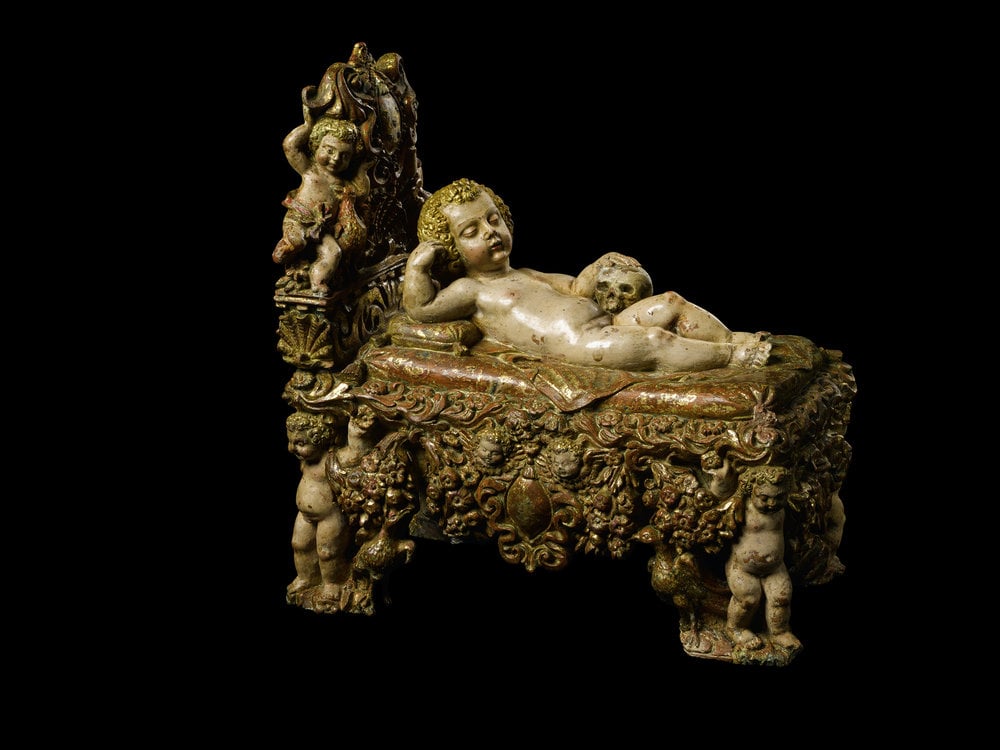
Jose Dias dos Santos, Sleeping Christ Child (circa 1700). Photo courtesy of Blumka Gallery, New York.
A seemingly bizarre little statue of a cherubic baby Jesus lying next to an ominous skull isn’t as strange as its seems.
“It’s connected to ancient mythology linking sleep to death—a metaphor for Christ dying for salvation,” Zeljka Himbele of the Blumka Gallery in New York told artnet News, pointing out that Jesus was crucified at Golgotha, which means “place of the skull.” (Artworks of the sleeping Christ child began to appear around 1500.)
The gallery was able to attribute the piece to Jose Dias dos Santos after Maria João Vilhena de Carvalho, curator at the Museu Nacional de Arte Antiga in Lisbon, pointed out how similar it was to another work by the artist in the museum’s collection. The piece is for sale at €45,000 ($51,000).
“This would have been a private devotional piece, but there would have been similar pieces in churches at that time,” Himbele added, pointing to the playful putti holding up the elaborately carved bed.
TEFAF Maastrict is on view at MECC Maastricht, Forum 100, 6229 GV Maastricht, the Netherlands, March 14–24, 2019.